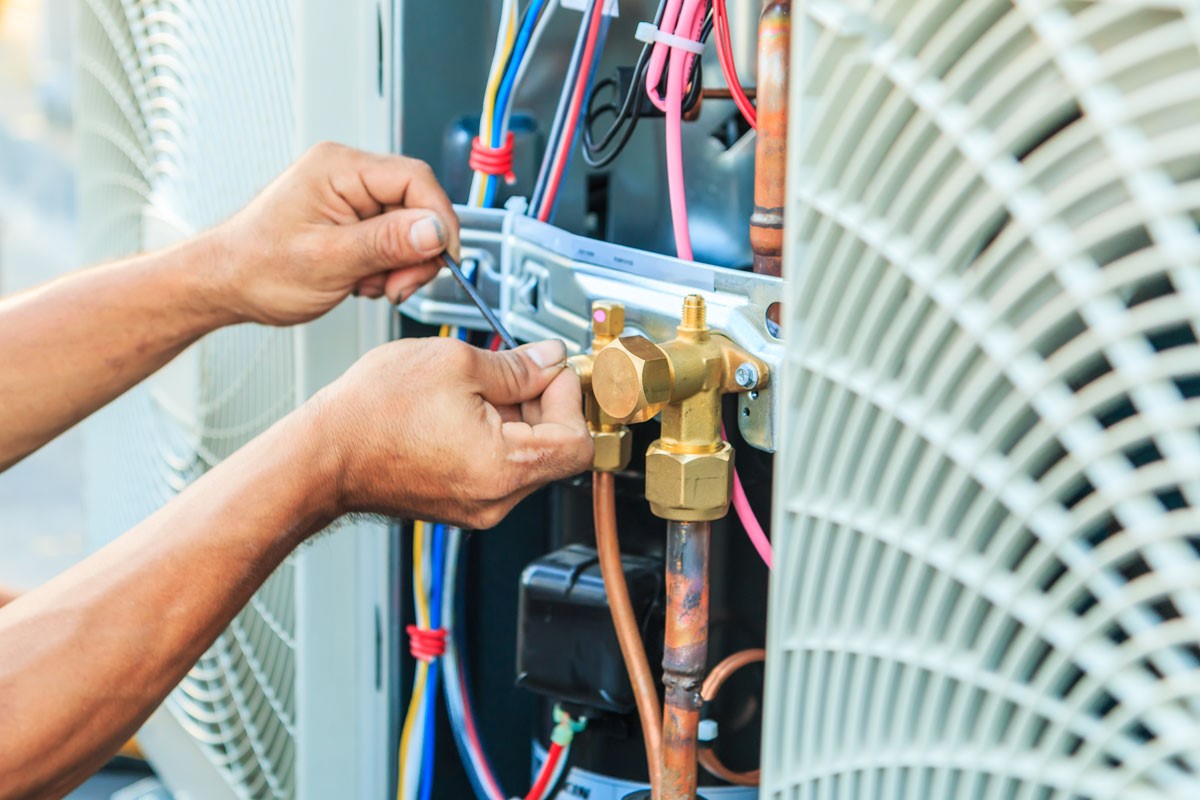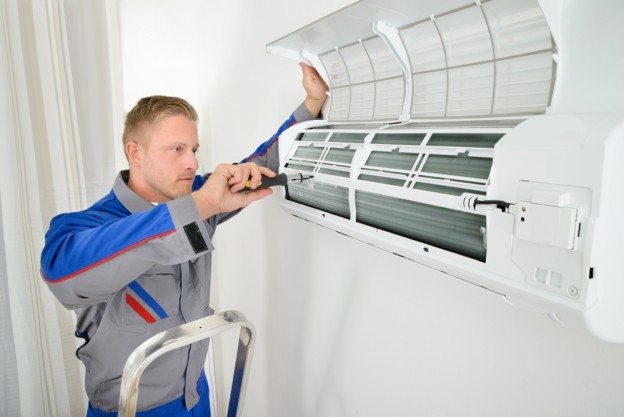When it concerns creating architectural areas, the old saying 'kind adheres to feature' applies. Yet have you ever took into consideration how incorporating cooling into architecture can raise comfort and effectiveness concurrently?
The seamless blend of cooling down systems within the framework of a building not only impacts the occupants' wellness yet additionally influences the overall sustainability of the framework. As you explore the detailed relationship between style and air conditioning, a globe of ingenious solutions and advanced modern technologies awaits your discovery.
Secret Takeaways
- Energy-efficient systems enhance comfort and sustainability.
- Integrated a/c improves indoor air quality.
- Stabilizing looks and capability makes certain optimal style.
- Future patterns focus on wise, lasting cooling remedies.
Relevance of Integrated Air Conditioning
When designing spaces, incorporating air conditioning is essential for guaranteeing the most effective comfort and functionality. Energy effectiveness plays an essential function in the layout procedure, as it not just reduces operational costs but likewise reduces the ecological effect of the structure. By integrating energy-efficient a/c systems, you can produce a lasting and economical option that benefits both the occupants and the planet.
Additionally, indoor air high quality is one more crucial element to consider when creating with incorporated a/c. Appropriate ventilation and filtration systems help keep a healthy and balanced interior environment by lowering pollutants and allergens. This brings about improved owner wellness and performance. When choosing air conditioning systems, focus on those that provide sophisticated filtration modern technologies to enhance the general indoor air high quality.
Variables Influencing Design Decisions
Integrating air conditioning right into architectural designs requires cautious consideration of different aspects that influence layout choices. When integrating air conditioning systems, sustainability factors to consider are critical to minimize the structure's ecological effect. Individual experience plays a substantial duty in figuring out the performance and complete satisfaction with the a/c system.

- Energy Effectiveness: Lasting design practices aim to minimize power intake, which not just benefits the setting yet additionally minimizes operational prices for the structure owner.
- Indoor Air Quality: Providing a comfy and healthy and balanced interior atmosphere improves the general user experience, advertising performance and well-being.
- Aesthetics and Integration: Integrating a/c systems perfectly into the architectural style guarantees that functionality does not compromise the aesthetic appeal of the area, boosting customer satisfaction and total building aesthetic appeals.
Effective Cooling Techniques for Structures
To maximize cooling efficiency in buildings, consider including passive design approaches along with air conditioning systems. Passive cooling methods can greatly lower the requirement for mechanical cooling, leading to even more sustainable services for keeping comfortable indoor temperature levels. Style functions such as shading gadgets, natural air flow systems, and thermal mass can aid regulate temperatures without depending only on energy-intensive a/c. By tactically putting home windows to make the most of cross ventilation or utilizing reflective roof covering products to reduce solar warm gain, you can harness the power of nature to cool your building efficiently.
Along with easy approaches, carrying out sustainable options like environment-friendly roofs or living walls can additionally improve cooling efficiency by giving insulation and decreasing warmth absorption. These attributes not only help in keeping comfortable interior temperature levels but also contribute to a greener setting. By integrating easy cooling techniques with lasting solutions, you can develop a much more energy-efficient and eco-friendly structure design that prioritizes both comfort and conservation.
Balancing Visual Appeals and Functionality
Consider the harmonious integration of aesthetic components with useful aspects in your architectural style to guarantee a well balanced and impactful end result. When including air conditioning systems right into your building design, striking a balance between looks and functionality is essential to developing spaces that not only look excellent but additionally give perfect comfort for occupants.
To accomplish this equilibrium, maintain the following points in mind:
- Blend the System with the Surroundings: See to it that the air conditioning devices or vents flawlessly integrate with the general visual of the space, whether with hidden placement, attractive covers, or matching colors.
- Prioritize Individual Experience: Design the air flow and temperature control systems in a manner that focuses on the comfort and health of the occupants. Take into consideration elements such as air circulation, noise levels, and ease of usage to enhance the total individual experience.
- Integrate Lasting Practices: Choose energy-efficient air conditioning services that not only contribute to the aesthetic appeal of the building but additionally promote sustainability and reduce environmental influence.
Future Patterns in Architectural Cooling
As you visualize the future of building layout, staying abreast of arising air conditioning fads comes to be pivotal for improving both kind and feature within your projects.
The integration of wise innovations into building air conditioning systems is set to revolutionize the means buildings are cooled. These systems use data and automation to optimize power usage, giving personalized convenience while reducing environmental influence.
Lasting solutions are additionally forming the future of building air conditioning. From easy design strategies that maximize all-natural ventilation to cutting-edge air conditioning products that minimize the demand for conventional air conditioning, sustainability goes to the forefront of cooling down innovations. Designers are progressively including environment-friendly roofs, shielding elements, and thermal mass right into their designs to produce more energy-efficient cooling systems. ac maintenance
Frequently Asked Questions
How Does Cooling Influence the Total Sustainability and Energy Effectiveness of a Structure Style?
When you incorporate a/c into building style, it impacts sustainability and power effectiveness. Power intake can climb due to air conditioning usage, affecting structure efficiency. This enhanced power need can have adverse ecological effects, lowering overall sustainability.
To reduce these impacts, take into consideration integrating energy-efficient HVAC systems, correct insulation, and passive cooling techniques. Stabilizing comfort with power efficiency is important for producing lasting architectural designs.
Are There Any Regulations or Certifications That Architects Required to Think About When Integrating Cooling Into Their Designs?
When integrating a/c right into your designs, it's vital to take into account regulative demands like building ordinance and qualification requirements for power efficiency. Fulfilling these guidelines warranties that your job straightens with market finest methods and ecological goals.
Familiarizing on your own with these laws will assist you in creating sustainable designs that focus on comfort while additionally lowering power usage. Remain notified and certified to supply projects that are both comfortable and environmentally friendly.
Can the Positioning of A/c Units Affect the General Comfort and Performance of an Area?
When it involves a/c devices, positioning matters a great deal for your room's comfort and functionality. Air circulation is crucial, so prevent obstructing vents or positioning units in dilemmas.
Think about just how noise pollution can affect your atmosphere and aim for an aesthetically pleasing configuration that mixes seamlessly with your spatial format.
Take note of where you place these units to assure maximum comfort and effectiveness throughout your area.
What Are Some Ingenious Technologies or Products That Can Be Made Use Of to Enhance Cooling Systems in Modern Style?
To enhance cooling systems in modern-day style, you can check out clever controls and lasting materials. Passive air conditioning strategies and utilizing thermal mass are innovative ways to enhance efficiency and convenience.
How Can Architects Ensure That the Style of Air Conditioning Equipments Matches the Total Visual of a Structure While Still Prioritizing Performance and Convenience?

To guarantee the style of air conditioning systems complements a building's visual, focus on visual combination and design harmony. Include energy-efficient technologies for performance. Balancing appearances and functionality boosts resident convenience.
Highlight seamless combination of a/c aspects into the architectural style. By focusing on both appearances and energy efficiency, engineers can produce a space that's aesthetically attractive, comfy, and environmentally friendly.
Verdict

Overall, when developing with comfort in mind, integrating cooling in architecture is essential. By thinking about elements such as effective cooling approaches, balancing visual appeals and capability, and staying in advance of future patterns, designers can produce rooms that aren't only aesthetically appealing however likewise comfy for occupants.
It is necessary to prioritize the well-being and convenience of those who'll be utilizing the space, and incorporated a/c plays a key role in attaining this objective.
